by Mia Taylor
Since reaching our first CTD station near the coast of Greenland in the early hours of Saturday morning, things have switched up a gear and work is well underway.
One of the first CTD stations was in close proximity to the southern tip of Greenland, many of us were contemplating waking up in hope of seeing Greenland’s cliffs but the ETA for reaching it was 2am, meaning that it would be dark at this time and unlikely. However, during the night the schedule shifted slightly and we reached the station closest to the coast around 5am, just as dawn was breaking. Despite lots of cloud and a grey hazy sky, the coastline was visible. We could see the flashing light from a lighthouse at Prince Christian Sound and to its left there appeared to be a glacier, further left again, a large iceberg. The glacier was intriguing, it was the brightest thing on the coastline yet with the poor visibility it was hard to understand visually; was it receding into the mountain or a layer of ice cloaking or jutting out of the cliff? No amount of squinting could clarify this for me. Most curious was that it was sparkling, as if it was covered with a gentle sprinkling of glitter.
Yesterday – Sunday – the moorings began; M1 and M2 were recovered, having been underwater and actively collecting data for the past year. This is the first time OSNAP have returned to the moorings since they were deployed so bringing them to the surface and retrieving their data was an exciting prospect, as was seeing their condition for the first time since spending a year beneath sea level. Recovering the moorings requires hauling them out of the ocean and removing and cataloguing the instruments. It’s heavy work and it’s cold out, plus due to the high pressure in the area the waves are rolling with more swell than the last couple of days, but the NMFS technicians who are organising the operation have the process efficiently choreographed and everything ran smoothly. Once all of the M1 and M2 2015-16 moorings were out of the water (all of which were fine, with the addition of some biology to a few buoys) a reconditioned set were ready to go back in. If you are not familiar with what these mooring’s are, let me try and explain: one mooring includes groupings of about four buoys incrementally attached along a long line of wire and between these groupings data collecting instruments are further attached.
Many of these instruments look cylindrical and are made from a combination of metals to prevent corrosion. The wire is long – M1 was 2059m in length – at the end of the wire a heavy weight is attached, which is designed to sink to the seabed pulling the wire and the buoys down with it so the line and buoys float vertically upwards, securing the instruments for data collection at
different depths. When it’s time for the mooring to return to the surface for data collection an acoustic release mechanism triggers the wire to detach from the weight and due to its buoyancy the mooring floats back up to the surface. M1, M2 and now M3 reached the surface intact and untangled making it easier for a technician to catch it and draw it back to the ship.
To successfully drag down the buoys the weight needs to be significant, for the redeployed M1 and M2 moorings a small part of a massive anchor chain had been chosen, to give an idea of its scale, each chain link is about the width of my forearm. It made a dramatic sight when held aloft by the winch and hanging between the gantries before it was dropped to its watery grave.
In the evening, having completed work at moorings M1 and M2 the ship headed back closer to Greenland for more CTD stations and the launching of a number of RAFOS floats. Sotiria and Ryan – who are on the 12am – 12pm watch – and the technicians spent the early hours consistently busy preparing the CTD, collecting water samples for salinity and nutrient analyses and recording details for the watch log. Although it is the middle of the night, it’s a nice time to be up and about. It’s more peaceful and the pitch black of the night sky against the bright lights of the ship sets an atmospheric scene. Even though it’s not possible to see the vast expanse of water around us at that time, you can definitely feel it. As dawn breaks (around 5am), wandering up the outside stairwells it seems there is always someone to run into who is starting their day.
Punctuating the work and giving structure to the day are mealtimes; the food is fantastic and includes more options than could possibly be eaten at one sitting. Should it be possible to lose sight of what day it is (I think it is possible), the meals offer each day a sense of identity; fish on Friday and today, Sunday, we had a roast dinner (with amazing spuds). The galley is indicative of how things seem to run on the Discovery as a whole; the standards are high and everyone is friendly. As a first-timer on a ship it’s crystal clear that everyone works very hard and that things run like a well-oiled machine. Everyone is doing different shifts so there is always someone awake and alert; it’s a 24hour ship in every respect. Options for downtime apart from socialising or having the sea rock you to sleep, include a session at the gym, playing cards or Wii, watching a video, or a number of other things, including perusing from library’s collection. One of its gems is ‘A century of Discovery’, charting some of the Discovery’s past voyages from the last few hundred years. Interesting fact: Captain Cooks ship, The HM Sloop Discovery, weighed 229 tons*, compare that to the 2012 RRS Discovery, which weighs around 6000 tons. The sense of history attached to the Discovery is inescapable here as photographs and prints of ships bearing the ‘Discovery’ name are hung on the walls of each deck, and show majestic looking ships alongside explorers, ice and penguins. It is a profound reminder of the ships heritage and that the vessel and its people are integral cogs in continuing its legacy of exploration and pioneering research, enabling new knowledge to inform our lives.
Other excitement on board today included Ian, the purser, opening the bond (theship’s shop) where you can buy chocolate, sweets, cigarettes, clothing bearing the ‘Discovery’ logo and more, within minutes of opening there is queue. More exciting again (if possible), this morning we saw a group of pilot whales to the side of the ship. They didn’t hang around but hopefully they will be back.
* Ships employed in Arctic ice: Discoverys past, 1602 to 1876 by Ann Savours, Archives of Natural History, 2005, A century of Discovery, Volume 32 Part 2
Photos by Mia Taylor
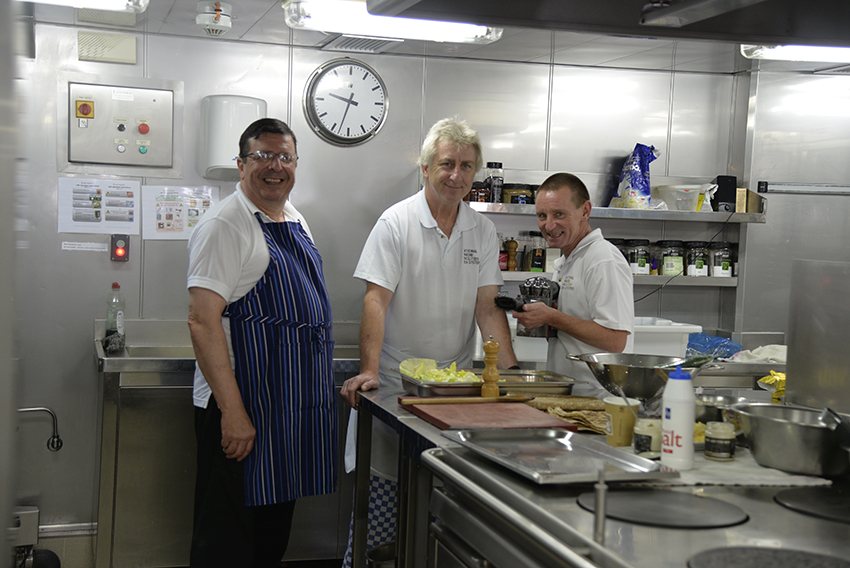
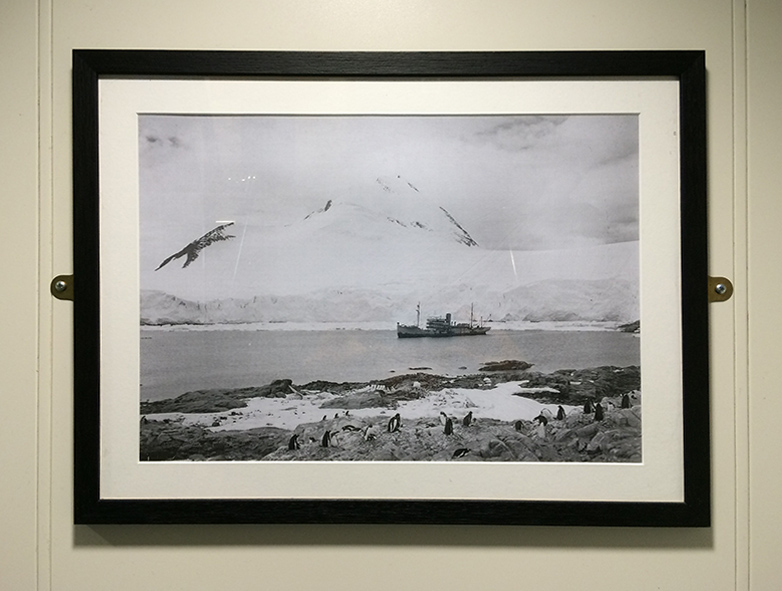
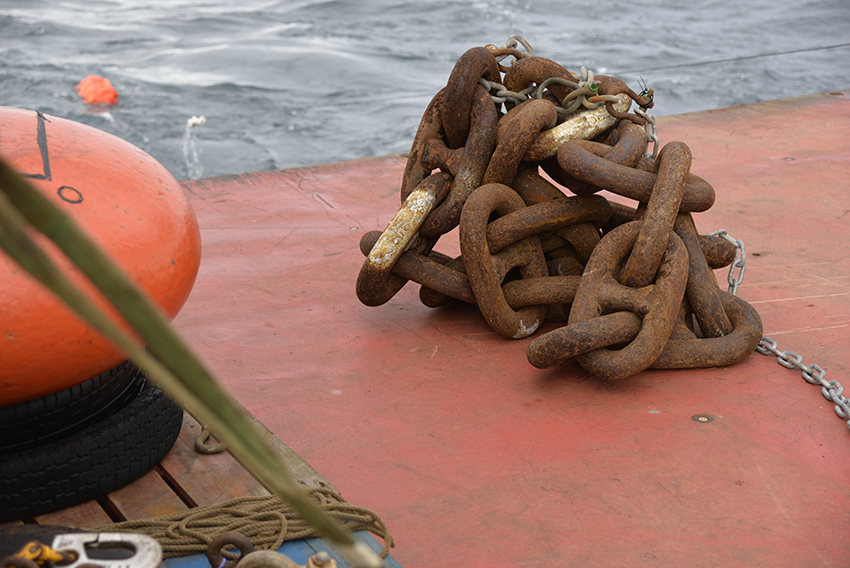
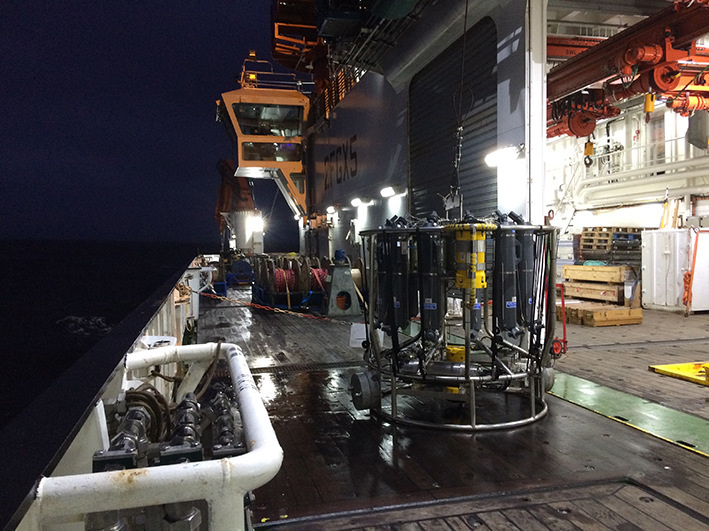
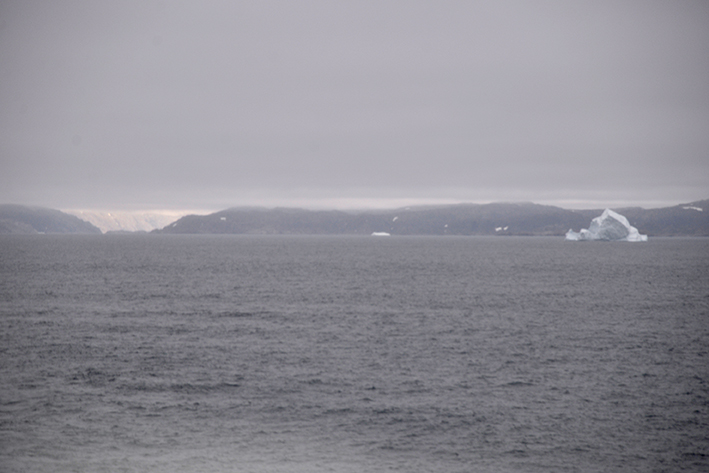
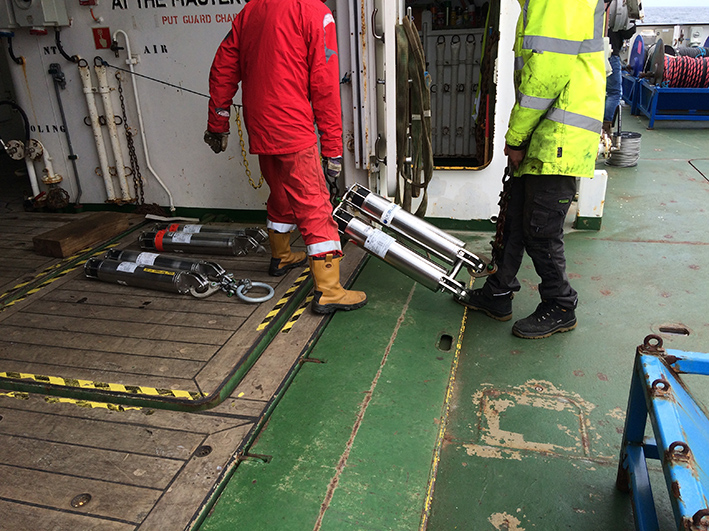
One response to “Glittering glaciers, giant anchor chain and Discoveries past”